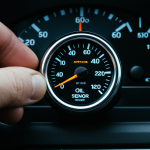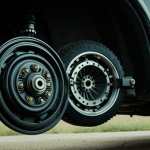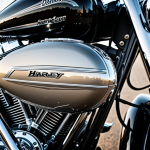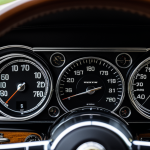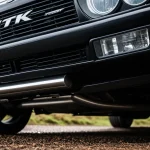Understanding Surface Rust on the Suzuki DRZ400 Frame
Surface rust on the DRZ400 frame primarily arises from exposure to moisture, dirt, and road salts. The bike’s off-road nature means it frequently encounters wet, muddy environments, accelerating the onset of motorcycle corrosion. Rust causes on the DRZ400 frame often stem from chipped paint, scratches, or untreated metal exposed to humidity. These vulnerabilities allow oxidation to begin quickly.
Certain areas on the DRZ400 frame are more at risk. Joints, welds, and spots where paint wears off due to vibration or impacts tend to develop surface rust first. Early detection here is crucial: look for flaky, reddish-brown patches or rough textures on the metal. Identifying these signs before corrosion advances prevents structural weakening.
Also to see : Step-by-Step Guide: How to Expertly Install a New Fuel Tank on Your Harley-Davidson Road King Classic
Assessing the severity involves checking if the rust has merely affected the surface or begun pitting deeper into the metal. Surface rust can usually be managed with cleaning; however, rust that flakes or bubbles under paint signals deeper damage. Regular inspections focusing on these common risk points help maintain frame integrity and prolong the DRZ400’s lifespan.
Essential Tools and Materials for Rust Prevention and Removal
Choosing the right rust removal tools is crucial for effectively tackling surface rust on the DRZ400 frame. Wire brushes, sandpaper, and steel wool double as practical abrasive tools to loosen rust without damaging the metal beneath. For finer work, rust remover gels or chemical converters neutralize rust and prevent further oxidation.
Also read : Maximize Your Kawasaki ZX-10R’s ABS Performance: 10 Must-Know Strategies for Ultimate Efficiency
Cleaning supplies including degreasers and gentle detergents help remove dirt and grease, which are common culprits in accelerating motorcycle corrosion. After cleaning, applying a DRZ400 rust prevention kit containing protective primers and coatings ensures the frame stays shielded from moisture. These kits often include rust-inhibiting sprays tailored to the bike’s unique alloy, making them highly effective.
When selecting protective coatings, look for options offering long-lasting resistance against environmental factors commonly affecting the Suzuki DRZ400 frame, such as moisture and salt exposure. Products with rustproofing qualities form a barrier that impedes rust causes from progressing further.
Using the right combination of cleaning agents, tools, and protective materials not only removes existing surface rust but also helps sustain the DRZ400 frame’s integrity over time, making maintenance more manageable in the long run.
Step-by-Step Process for Cleaning and Removing Surface Rust
Effective surface rust removal on the DRZ400 frame begins with thorough preparation. Start by washing the frame with a degreaser to eliminate dirt and grease, which can interfere with rust treatments. Dry the frame completely before proceeding to avoid trapping moisture.
Next, use rust removal tools such as wire brushes or fine-grit sandpaper to carefully remove flaky rust without damaging the metal underneath. Focus on vulnerable areas like joints and welds where rust causes typically initiate. This abrasive cleaning should continue until you see the bare, rust-free metal.
After mechanical removal, apply a rust converter or neutralizer designed to chemically treat remaining rust spots. These products halt oxidation and prepare the metal for protective coatings. During this step, ensure you wear gloves and work in a well-ventilated area for safety.
Once cleaned and treated, the DRZ400 frame is ready for DRZ400 maintenance applying protective sprays or primers. This step ensures any microscopic rust causes left behind do not spread. Following this stepwise rust control process methodically prolongs the frame’s life, preventing deeper corrosion and costly repairs.
Understanding Surface Rust on the Suzuki DRZ400 Frame
Surface rust on the DRZ400 frame primarily develops from consistent exposure to moisture and environmental elements. The bike’s off-road use often introduces contact with water, mud, and road salts, accelerating rust causes such as oxidation. This corrosion starts at weak points—usually places where protective paint has chipped or worn away due to impacts or vibration.
Risk factors include welds, joints, and areas under mechanical stress, because metal here is more susceptible to rust progression. Early detection is key. Look closely for reddish-orange patches or rough, flaky textures, especially in these vulnerable zones. These symptoms indicate surface rust rather than deep corrosion, allowing easier management.
Assessing severity involves determining if rust is superficial or has penetrated beneath the paint. Surface rust can feel rough but generally stays on the metal’s top layer, whereas bubbling or flaking paint signals more extensive damage. Performing regular visual checks, particularly after wet rides, helps catch rust early, preventing costly repairs and maintaining the DRZ400’s structural integrity for reliable, long-term use.
Understanding Surface Rust on the Suzuki DRZ400 Frame
Surface rust on the DRZ400 frame originates primarily from moisture exposure and environmental factors unique to off-road riding. Common rust causes include chipped paint, scratches, and metal exposed through impacts or vibration. These compromised areas lose protective coatings, allowing oxidation to form and spread.
The most vulnerable points on the DRZ400 frame are weld seams, joints, and sections under constant mechanical stress. These spots endure higher wear and are prone to developing surface rust earlier than smoother, well-coated surfaces. Early recognition is essential: watch for reddish-brown discoloration or a rough, flaky feel on metal surfaces.
To assess severity, determine if the rust affects only the surface or has penetrated deeper. Surface rust appears as light discoloration without paint bubbling or flaking. If paint blisters or flakes, the problem is more advanced, signaling deeper motorcycle corrosion that requires immediate attention.
Frequent inspections focusing on these risk areas are crucial for early detection. Addressing rust at the surface stage helps preserve the DRZ400 frame’s structural integrity and avoids expensive repairs due to deeper corrosion over time.
Understanding Surface Rust on the Suzuki DRZ400 Frame
Surface rust on the DRZ400 frame typically begins with exposure to moisture, dirt, and environmental elements, common during off-road use. The primary rust causes involve chipped paint, scratches, and points where metal is exposed due to vibration or impacts. These compromised spots lose their protective coating, enabling oxidation to start.
Certain areas are especially vulnerable. Weld joints, frame intersections, and spots under mechanical stress are more prone to develop motorcycle corrosion. Damage here often initiates as reddish-brown patches or a rough, flaky texture on the metal surface. Early detection is critical—visually inspect these high-risk zones after rides in wet or muddy conditions.
Assessing severity depends on whether rust is purely surface-level or has penetrated deeper. Surface rust feels rough without paint bubbling, whereas bubbling or flaking paint indicates advanced corrosion. Since the DRZ400 frame relies on structural integrity, identifying and managing surface rust early prevents costly repairs. Regular, focused inspections allow riders to catch rust causes promptly and maintain frame longevity.


